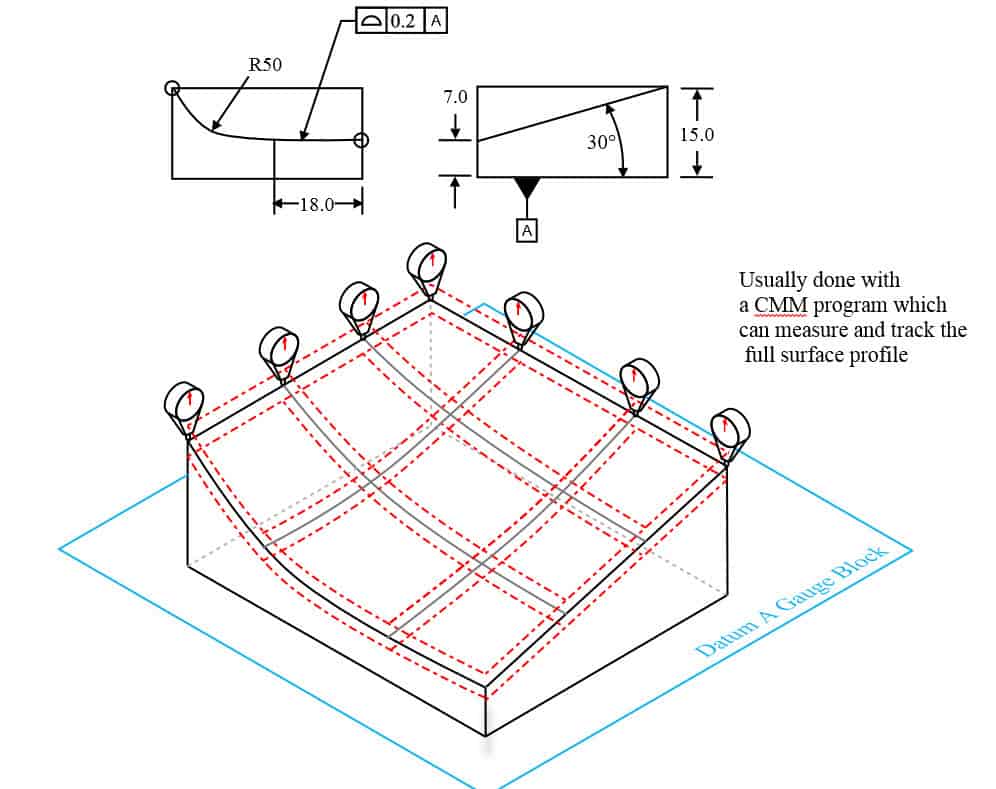Manual Calculation Of True Position Symbol
Example of geometric dimensioning and tolerancing Geometric Dimensioning and Tolerancing (GD&T) is a system for defining and communicating. It uses a symbolic language on and computer-generated three-dimensional solid models that explicitly describes nominal and its allowable variation. It tells the manufacturing staff and machines what degree of is needed on each controlled feature of the part. GD&T is used to define the nominal (theoretically perfect) geometry of parts and assemblies, to define the allowable variation in form and possible size of individual features, and to define the allowable variation between features. • Dimensioning specifications define the nominal, as-modeled or as-intended geometry.
One example is a basic dimension. • Tolerancing specifications define the allowable variation for the form and possibly the size of individual features, and the allowable variation in orientation and location between features. Two examples are and feature control frames using a (both shown above). There are several standards available worldwide that describe the symbols and define the rules used in GD&T. One such standard is (ASME) Y14.5-2009. This article is based on that standard, but other standards, such as those from the (ISO), may vary slightly. Einstein On The Beach Philip Glass Rarlab there.

The Y14.5 standard has the advantage of providing a fairly complete set of standards for GD&T in one document. The ISO standards, in comparison, typically only address a single topic at a time. There are separate standards that provide the details for each of the major symbols and topics below (e.g. Position, flatness, profile, etc.). Contents • • • • • • • • • • • • • • History [ ] The origin of GD&T has been credited to a man named Stanley Parker, who developed the concept of 'true position' in 1938.
While very little is known about the life of Stanley Parker, it is recorded that he worked at the Royal Torpedo Factory in Alexandria, Scotland. Parker's work was used to increase production of naval weapons by new contractors. Dimensioning and tolerancing philosophy [ ] According to the ASME Y14.5-2009 standard, the purpose of geometric dimensioning and tolerancing (GD&T) is to describe the engineering intent of parts and assemblies.
The datum reference frame can describe how the part fits or functions. GD&T can more accurately define the dimensional requirements for a part, allowing over 50% more tolerance zone than coordinate (or linear) dimensioning in some cases. Proper application of GD&T will ensure that the part defined on the drawing has the desired form, fit (within limits) and function with the largest possible tolerances. GD&T can add quality and reduce cost at the same time through producibility. There are some fundamental rules that need to be applied (these can be found on page 7 of the 2009 edition of the standard): • All dimensions must have a tolerance. Every feature on every manufactured part is subject to variation, therefore, the limits of allowable variation must be specified. Plus and minus tolerances may be applied directly to dimensions or applied from a general tolerance block or general note.
Hiro Wireless Pci Adapter Drivers. For basic dimensions, geometric tolerances are indirectly applied in a related Feature Control Frame. The only exceptions are for dimensions marked as minimum, maximum, stock or reference.
• Dimensions define the nominal geometry and allowable variation. Measurement and scaling of the drawing is not allowed except in certain cases. • Engineering drawings define the requirements of finished (complete) parts. Every dimension and tolerance required to define the finished part shall be shown on the drawing. If additional dimensions would be helpful, but are not required, they may be marked as reference. • Dimensions should be applied to features and arranged in such a way as to represent the function of the features. Additionally, dimensions should not be subject to more than one interpretation.